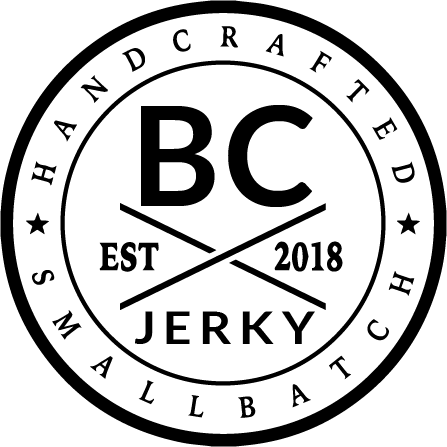My Jerky Journey – Fragmented Jerky VS Whole Muscle?
Prologue…
We’re now at the end of April. Coronavirus still exists and tomorrow the NSW social distancing guidelines are set to cool it’s jets – but only slightly. As the restrictions start to ease up, this means we will likely have to dedicate more time to making beef jerky (I know, right?!), and less time dedicated to educating everyone on the hard hitting topics – such as beef jerky. So let’s dive straight into today’s subject – Fragmented VS Whole Muscle beef jerky.
So… what the heck is ‘Fragmented’ Jerky?
Locked and loaded - Jerky Cannon
That is a very good question and a great starting point. Whilst the phrase ‘whole muscle’ seems pretty self-explanatory, ‘fragmented’, in terms of jerky, is somewhat less obvious. To put it simply, ‘fragmented’ jerky is jerky which has been made out of minced or ground meat that is squirted out of a jerky gun, or jerky cannon, onto the drying racks prior to the dehydration process. What is a jerky gun? Well, it’s basically a caulking gun (those devices you use to squirt out glue and sealants). So fragmented simply refers to the state of the meat – minced, versus whole muscle which is made from slicing up a primal cut* into strips of meat ready for marinating/jerkification.
Is minced meat good for making beef jerky?
Generally speaking, minced meat is quite high in fat. Fat does not dehydrate as it does not really contain any water (dehydration is the term used where water is removed). Because of this, fat in beef jerky tends to go rancid much faster than the dehydrated meat which means, your shelf-stable product won’t really be shelf-stable any longer. If you’re making fragmented jerky, it is recommended you use an extra lean minced meat – at minimum 90% meat to 10% fat ratio. Even when using an extra lean minced meat, fragmented jerky will likely still be much fattier than whole muscle jerky - providing the primal has been trimmed and cleaned up well.
When beef is minced, far more surface area is created on all the minute pieces of meat than on a primal cut. Combine this increased surface area with the extra handling and processing used to create minced beef, the product has an exponentially higher chance of picking up harmful bacteria. With this mind it is essential for all fragmented jerky to use preservatives – sodium nitrite, in order to make the end product safe for human consumption. Using preservatives in beef jerky and their ‘safety’ – well, this is a conversation for another time! 😉
Further to adding preservatives to fragmented jerky, the nature of the product opens it up to the potential for producers to use corn-based ‘fillers’. What this means is they can ‘beef up’ their product without actually using any beef. That is, they can increase the volume of their product by using a much less expensive ingredient. This is why many (not all) fragmented jerkies tend to have a much lower protein content. You can see this for yourself if you pay attention to the nutritional information panel usually found on the rear of the jerky packaging. I’ve personally found that two very popular store-bought brands of jerky have around 20 grams of protein per 100g. Compare that to many craft beef jerkies where the protein content is closer to 60g per 100g – the difference is significant.
Staring out the window, waiting for this virus to end!
In Summary…
In case you haven’t caught the gist of this blog – we’re not huge fans of fragmented jerky. Or more accurately, we’re not huge fans of large mega companies maximising profits by using cheap meat in their fragmented jerky, pumping them with fillers and using potentially harmful preservatives.
There may be some jerky companies out there which aren’t pumping their fragmented jerky full of fillers to save a quick buck, but I’m yet to find one (admittedly though – I haven’t tried all that hard).
By law, fragmented jerky must add preservatives to ensure it’s shelf-stable, and we’re just not sold on adding preservatives to a product when there’s a clear alternative; if you need your jerky fix, buy craft, whole muscle beef jerky, such as BC Jerky 😉😊
*primal cut – a piece of meat initially separated from the carcass of an animal during the butchering process. Examples of primals include the round, loin, rib and chuck.
